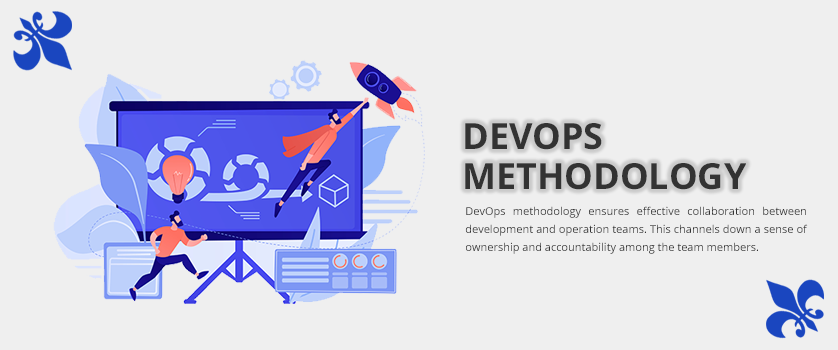
What Is DevOps Methodology?
DevOps methodology brings software development teams and
information technology operatives together. Earlier these two
teams used to work separately and take an ample amount of time
from the initial designing phase to product release. Contrary
DevOps remove any kind of inefficiency and let two teams
collaborate for a common objective. Not for a single minute
the communication is broken. Be it building, testing, or
releasing, at all the phases, teams remain
collaborative.
Besides bringing speed and efficiency, teams ensure that
there must be continuous integration, continuous deployment,
automated testing, and transparency in code repositories.
Is DevOps an Agile Methodology?
Both DevOps and Agile aim to make applications in a speedy
way, people often get confused between the two. So let’s
understand what separates one from the other:
|
Agile
|
DevOps
|
-
It’s an iterative approach to build an
application by dividing a bigger task into many
subtasks with an orientation of small and rapid
releases.
-
Agile development requires every team member to
have similar skills.
-
Smaller teams are employed for faster
movement.
-
It reduces the gap between customer and development
& testing teams.
|
-
It brings development and operations teams together
to build an application in a state of continuous
integration, continuous testing, and continuous
deployment environment.
-
In DevOps SDLC, the skills are different for
development and operation teams.
-
It involves all stakeholders, which makes a
comparatively larger team.
-
It reduces the gap between development &
testing and operations.
|
What Is the Goal of a DevOps Methodology?
If Agile has replaced the waterfall software development
process already then what is the need for DevOps?
Agile is advanced but there are some areas where DevOps can
outperform it that includes:
-
Speed:
To quickly adapt to the changes in the market, an
organization should be able to develop and release products
faster. With practices like continuous integration and
continuous delivery, DevOps ensures speed.
-
Safety:
During software development, the teams have to ensure that
the application performs well. In the DevOps lifecycle, many
automated testing suites and other software help in
identifying and correcting issues immediately.
-
Speedy Delivery:
Besides offering many benefits like speed, quick releases,
and reliability, DevOps ensures that the turnaround time to
fix or remove any bug should be as short as possible. Not
just it improves the product’s quality but also eyes
for a better user experience.
-
Scalability:
With ever-changing business needs or user’s demands,
scaling rapidly and economically is challenging. But with
DevOps, businesses can scale easily because many features
such as hosting applications on the cloud or practices like
using infrastructure as a code aim to scale easily.
-
Security:
By stressing less on human intervention, some DevOps tools
ensure strong security. From building a new application to
scaling an existing one, many tasks are either automated or
handled via cloud-based APIs. Plus, this automatic process
notices failures early and rectifies them.
-
Collaboration:
DevOps encourages effective collaboration between the teams
throughout the software development life cycle. This makes
teams more efficient, increases productivity, reduces
mistakes, and offers unmatched satisfaction.
Conclusion
DevOps methodology ensures effective collaboration between
development and operation teams. This channels down a sense of
ownership and accountability among the team members. Each
member is encouraged to look beyond the traditional roles to
provide the best product to the end-user. However, the process
is agile yet one should not address it as an Agile
methodology.


